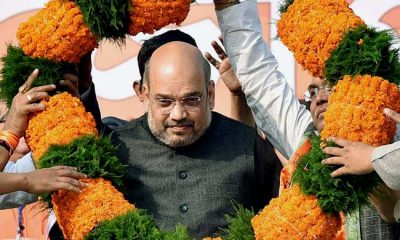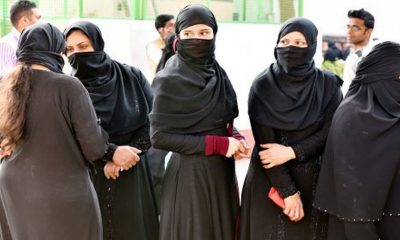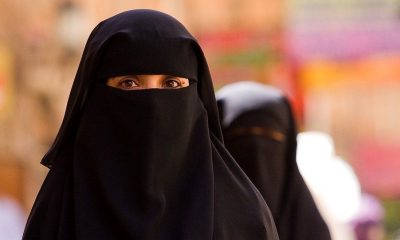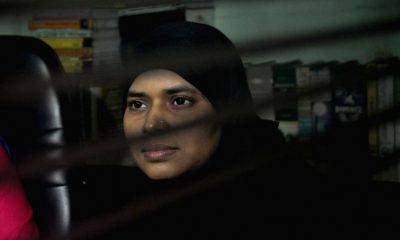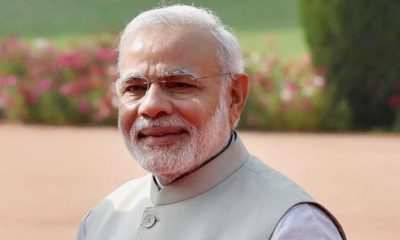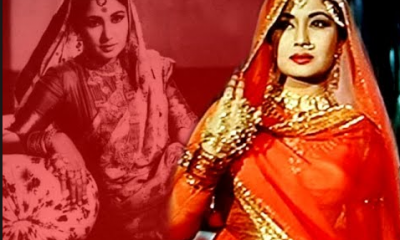Feature
New Triple Talaq Law Challenged In Supreme Court, Delhi High Court

New Delhi: The newly-minted law which criminalises the practice of instant ‘triple talaq’, making it a punishable offence, has been challenged in the Supreme Court and the Delhi High Court.
On Friday, a day after President Ram Nath Kovind signed on the The Muslim Women (Protection of Rights on Marriage) Bill 2019, making it into law, a Muslim relegious organisation —Samastha Kerela Jamiathul Ulema—moved the apex court against the legislation, claiming it violates the fundamental rights as enshrined in the constitution.
On the same day, advocate Shahid Ali challenged the law in Delhi High Court, calling it unconstitutional.
The Bill replaced the triple talaq ordinance formulated in 2018, and makes the declaration of triple talaq a cognizable offence, attracting up to three years imprisonment with a fine. An accused can be arrested without a warrant.
The religious organisation has contended that the Act allows for penal actions against a specific class of persons based on their religion.
The petition also said that following the Shayara Bano case, the utterance of the word has been rendered useless, and questioned the logic behind the penal action against husband for the utterance of a meaningless word.
This Act action may lead to polarization and disharmony in society, the plea said, seeking direction to strike down the law while asking for a stay on its enforcement.
The petitioner also said the bill violates fundamental rights under Article 14, 15 and 21 of the constitution of India.
The plea filed in the Delhi High Court said the Act was not only against the fundamental rights enshrined in the constitution but also against the principle of natural justice and directive principles of state policy.
The petition filed in the high court questioned the absence of mechanism in place to test the veracity of complaints for pronouncing the word ‘talaq’ thrice.
The cases are most likely to be mentioned next week in the both the courts.
When the Bill was tabled in Parliament, leaders of the Congress, Samajwadi Party, the Dravida Munnetra Kazhagam (DMK) and the Rashtriya Janata Dal (RJD) had said that it was partisan, unconstitutional and arbitrary, while accusing the government of getting it passed through a “managed majority.”
Entertainment
Meghalaya Reserves Legalized Gambling and Sports Betting for Tourists

The State Scores Extra High on Gaming-Friendly Industry Index
Meghalaya scored 92.85 out of 100 possible points in a Gaming Industry Index and proved to be India’s most gaming-friendly state following its recent profound legislation changes over the field allowing land-based and online gaming, including games of chance, under a licensing regime.
The index by the UK India Business Council (UKIBC) uses a scale of 0 to 100 to measure the level of legalisation on gambling and betting achieved by a state based on the scores over a set of seven different games – lottery, horse racing, betting on sports, poker, rummy, casino and fantasy sports
Starting from February last year, Meghalaya became the third state in India’s northeast to legalise gambling and betting after Sikkim and Nagaland. After consultations with the UKIBC, the state proceeded with the adoption of the Meghalaya Regulation of Gaming Act, 2021 and the nullification of the Meghalaya Prevention of Gambling Act, 1970. Subsequently in December, the Meghalaya Regulation of Gaming Rules, 2021 were notified and came into force.
All for the Tourists
The move to legalise and license various forms of offline and online betting and gambling in Meghalaya is aimed at boosting tourism and creating jobs, and altogether raising taxation revenues for the northeastern state. At the same time, the opportunities to bet and gamble legally will be reserved only for tourists and visitors.
“We came out with a Gaming Act and subsequently framed the Regulation of Gaming Rules, 2021. The government will accordingly issue licenses to operate games of skill and chance, both online and offline,” said James P. K. Sangma, Meghalaya State Law and Taxation Minister speaking in the capital city of Shillong. “But the legalized gambling and gaming will only be for tourists and not residents of Meghalaya,” he continued.
To be allowed to play, tourists and people visiting the state for work or business purposes will have to prove their non-resident status by presenting appropriate documents, in a process similar to a bank KYC (Know Your Customer) procedure.
Meghalaya Reaches Out to a Vast Market
With 140 millions of people in India estimated to bet regularly on sports, and a total of 370 million desi bettors around prominent sporting events, as per data from one of the latest reports by Esse N Videri, Meghalaya is set to reach out and take a piece of a vast market.
Estimates on the financial value of India’s sports betting market, combined across all types of offline channels and online sports and cricket predictions and betting platforms, speak about amounts between $130 and $150 billion (roughly between ₹9.7 and ₹11.5 lakh crore).
Andhra Pradesh, Telangana and Delhi are shown to deliver the highest number of bettors and Meghalaya can count on substantial tourists flow from their betting circles. The sports betting communities of Karnataka, Maharashtra, Uttar Pradesh and Haryana are also not to be underestimated.
Among the sports, cricket is most popular, registering 68 percent of the total bet count analyzed by Esse N Videri. Football takes second position with 11 percent of the bets, followed by betting on FIFA at 7 percent and on eCricket at 5 percent. The last position in the Top 5 of popular sports for betting in India is taken by tennis with 3 percent of the bet count.
Local Citizens will Still have Their Teer Betting
Meghalaya residents will still be permitted to participate in teer betting over arrow-shooting results. Teer is a traditional method of gambling, somewhat similar to a lottery draw, and held under the rules of the Meghalaya Regulation of the Game of Arrow Shooting and the Sale of Teer Tickets Act, 2018.
Teer includes bettors wagering on the number of arrows that reach the target which is placed about 50 meters away from a team of 20 archers positioned in a semicircle.
The archers shoot volleys of arrows at the target for ten minutes, and players place their bets choosing a number between 0 and 99 trying to guess the last two digits of the number of arrows that successfully pierce the target.
If, for example, the number of hits is 256, anyone who has bet on 56 wins an amount eight times bigger than their wager.


